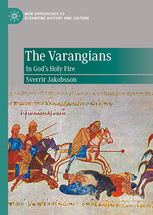Raiders of the Lost Past is not, as it turns out, the anticipated 5th Indiana Jones film but rather a BBC Two archaeology show which premiered last week. Hosted by Oxford scholar Dr. Janina Ramirez, the first season showcased finds from Suffolk, England, Mexico and even a 40.000 year old work of art discovered in Nazi Germany in 1939.
While neither Anglo-Saxons (Sutton who?), Olmecs or Upper Paleolithic cultures are of particular interest to Eastern Viking enthusiasts, the show is well-worthwhile, offering as it does a different take on history than usually presented. In the second and current season, Dr. Ramirez begins with the Palace of Knossos in Crete, which is here seen to be a Minoan administrative centre rather than a royal dwelling.
The next couple of episodes features two subjects dear to our hearts, Vikings and Turkey. The second episode, which premieres this weekend, sees Dr. Ramirez going to Norway, navigating the various hurdles arising from the pandemic, to explore a Viking ship. This is probably the Gjellestad ship previously discussed on these pages, or else an earlier find such as the Oseberg ship.
The third and final show of the season takes us to modern day Turkey, not to explore the Byzantines, sadly, but a 9000 year old city. No doubt this will turn out to the the Neolithic Çatalhöyük, but there is in fact a small Byzantine settlement nearby. Fingers crossed it gets a mention.
For those who want to check out the Janina Ramirez take on the Vikings, you can have a look at BBC Two – Raiders of the Lost Past with Janina Ramirez, Series 2, The Viking Ship
Sadly, the iPlayer only works in the UK.



